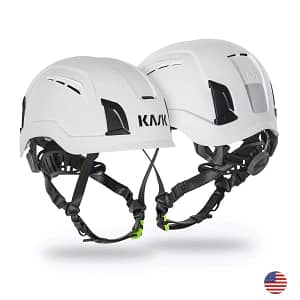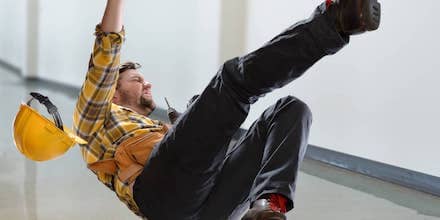Thomas Edison once said, “The chief function of the body is to carry the brain around.” And as history has shown him to be exceptionally clever, it stands to reason that protecting the brain and head might be a good idea, especially in dangerous environments. And now, thanks to recent advances in helmet technology, the construction industry has a chance to do that. Consider this: if your life depended on how your computer performed, would you ever choose a 1970’s model that is hopelessly outdated? Of course not. We require modern devices to make it through the day. So, when it comes to the job site, do we really want to leave our head protection to technology twice as ancient? Or might it finally be time to upgrade from the old-school hardhat?
The traditional hardhat was introduced somewhere between 60 and 100 years ago, depending on the criteria, and has been made of different materials, to include: leather, steel, steamed canvas, aluminum, fiberglass, and thermoplastics. Technically a Type I helmet per ANZI Z89.1, it is designed to protect the top of the head from falling objects, which it does a decent job of. They are generally inexpensive, made of plastic, and have no chinstrap or insulation. On the other hand, they do not provide lateral protection and tend to fly off with vigorous movement, or even bending over too far. Essentially, they DO NOT offer protection in a slip, trip, or fall situation. This is a significant problem; because falls are the leading cause of injury and death in our industry, representing more than half of fatal work-related traumatic injuries. 
Enter the new kid on the block, the ANZI Type II safety helmet, a polycarbonate masterwork born of the latest in safety, sporting, and industrial workplace technologies. These helmets, such as the Zenith X2 Air collection from KASK, meet both vertical and lateral impact and penetration requirements and have a foam inner liner made of expanded polystyrene (EPS). They also have a litany of cutting-edge features, including an adaptive fit system and advanced chinstrap. In short, Type II safety helmets like the KASK helmet mentioned, DO provide protection in slip, trip, and fall situations. Simply put, they save lives.
If it seems common sense to consider the latest in helmet safety technology when outfitting your work crew, you’re probably right. As far as the construction industry is concerned, it’s actually more of a call to action. Every day, more and more owners and contractors are requiring OSHA approved, ANZI Type II safety helmets on the job site, and this is not a trend that will go away. Change is hard to make, but once it’s done, it becomes the new normal. Welcome to the new normal: a recommitment to worker safety. So, let’s not send our crews out to work with a pinto on their head when they could be sporting a new Ferrari.
